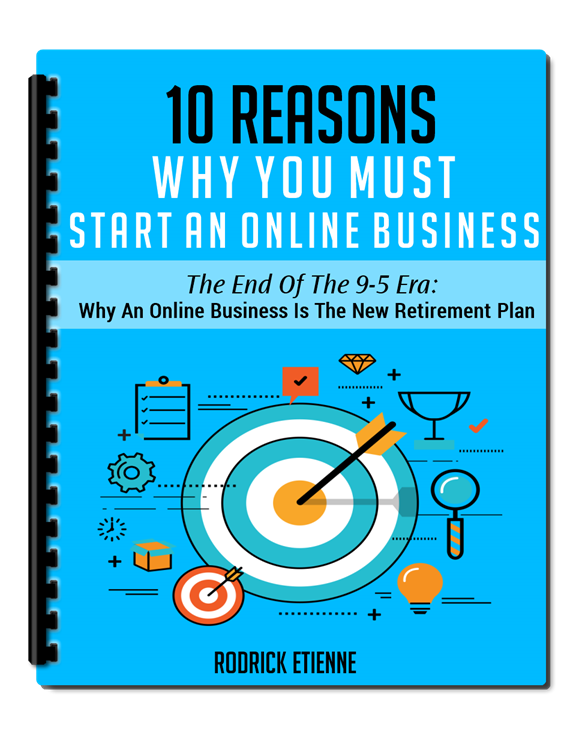Starting an affiliate store can be one of the most exciting and realistic ways to break…
10 Best Ways To Do Affiliate Marketing For Beginners On A Budget

Affiliate marketing has become one of the most popular ways for working people to make extra income without starting a traditional business.
The beauty of it is that you don’t need a huge amount of money to get started. All you really need is some time, patience, and a willingness to learn the ropes.
For beginners on a budget, affiliate marketing offers a realistic path to earning money online, especially if you’re strategic about your approach.
At its core, affiliate marketing simply means promoting products or services from other companies and earning a commission when someone purchases through your special affiliate link.
It sounds simple, but success requires a bit more than just dropping links everywhere.
The good news is that with the right strategy, even if you’re starting with little to no money, you can still build a steady stream of income.
Let’s break down the 10 best ways to do affiliate marketing for beginners on a budget, complete with practical tips, checklists, examples, and resources you can start using right away.
1)) Start With a Free Platform Before Investing in a Website
If you’re on a budget, you don’t need to buy a domain or pay for hosting right away.
Free platforms like Medium, WordPress.com, Blogger, or even social media pages can help you start promoting affiliate products.
This removes the initial barrier of cost and allows you to focus on building your skills before spending money.
Practical Starter Hacks for Free Platforms:
- Medium or WordPress: Write blog-style posts with reviews, tutorials, or tips that naturally link to affiliate products.
- Social Media Pages: Create a dedicated Facebook or Instagram page around a niche topic (fitness, personal finance, tech tools, etc.).
- Pinterest: Use it as a visual search engine and post pin graphics linking to affiliate content.
Once you begin to see traction and earn commissions, you can reinvest your earnings into a professional website, but free tools let you test the waters first.
Pro-Tip: While free platforms like Medium or WordPress.com are great starting points, avoid the temptation to spam affiliate links—doing so will only damage your credibility and get your posts ignored and potentially get your accounts banned.
Instead, focus on creating valuable, problem-solving content that genuinely helps readers. Quality builds trust, and trust drives clicks.
Also, don’t overlook the free trial from the Ghost blogging platform.
Ghost is a powerful tool built for professional publishers, giving you the ability to create, share, and grow a business around your content once you’re ready to level up.
2)) Choose a Beginner-Friendly Niche That Doesn’t Require a Big Investment
Picking the right niche is one of the best ways to do affiliate marketing effectively.
Beginners often make the mistake of choosing saturated or expensive niches, which makes it harder to compete.
Instead, look for niches that match your interests and also appeal to everyday people.
Budget-Friendly Niche Checklist:
- Low-Cost or Free Products: Digital products (ebooks, software trials, courses) often have high commissions.
- Everyday Needs: Health tips, side hustles, DIY projects, or budgeting tools work well for working-class audiences.
- Evergreen Topics: Choose niches that don’t depend on fads—fitness, personal finance, or home improvement are always relevant.
By focusing on niches where people naturally spend money or seek solutions, you’ll have more success without needing paid advertising to compete.
3)) Use Free Social Media Marketing to Grow Your Audience
Social media is one of the most powerful tools available to affiliate marketers who are strapped for cash.
You don’t need ads to start—just consistency and a little creativity. Platforms like TikTok, Instagram, and YouTube Shorts make it easy to go viral without spending a dime.
Low-Budget Social Media Growth Ideas:
- Micro-Content Strategy: Post short, punchy videos that showcase how a product solves a problem.
- Engagement Hacks: Use polls, questions, and discussions to encourage interaction.
- Repurpose Content: Take one blog post and break it into multiple Instagram posts, Facebook updates, and short TikTok clips.
Social media gives you the chance to test what resonates with your audience and refine your strategy at zero cost.
4)) Build an Email List With Free or Low-Cost Tools
An email list is the secret weapon in affiliate marketing. Even if you’re on a budget, you can start with free email marketing platforms like MailerLite or ConvertKit’s free plan.
Unlike social media, you own your email list, which means no algorithm can take away your audience.
Affiliate Email Blueprint for Beginners:
- Lead Magnet Idea: Offer a free guide like “5 Budget-Friendly Ways to Save Money Each Month” in exchange for an email address.
- Simple Automation: Create a 3-email welcome series where you introduce yourself, deliver value, and casually promote one affiliate product.
- Keep It Personal: Write your emails as if you’re talking to a friend. Authenticity drives trust, which drives conversions.
With email marketing, you can nurture leads over time, and it doesn’t have to cost you anything to get started.
5)) Leverage Free SEO to Get Organic Traffic
Search engine optimization (SEO) might sound complicated, but it’s one of the most cost-effective strategies for beginners.
You can use free keyword research tools like Ubersuggest or Google Keyword Planner to find search terms people are already using.
Then, create content around those terms. When you’ve made some money, it’s best to invest in paid keyword tools.
Beginner SEO Worksheet:
- Find Low-Competition Keywords: Look for phrases like “best budget fitness apps” instead of just “fitness apps.”
- Write Long-Form Content: Articles over 1,500 words tend to perform better.
- On-Page Basics: Use your keyword in the title, intro, headers, and meta description naturally.
SEO does take time, but once your content ranks, you’ll receive free traffic without spending on ads. That’s one of the best ways to do affiliate marketing on a budget long-term.
6)) Create Comparison or “Best Of” Content
People love to compare options before making a purchase. Creating simple blog posts or social media content that compares different products can help you generate commissions without needing paid ads.
Comparison Post Template:
- Introduction: Briefly explain why people often struggle to choose between products.
- Product Breakdown: List features, pros, cons, and price points.
- Your Recommendation: Give your honest opinion (people can tell when you’re being fake).
- Affiliate Links: Provide links after each product mention for easy clicks.
Examples include:
- “Best Budget-Friendly Tools for Beginner Bloggers”
- “Top 5 Free Apps to Track Your Fitness Goals”
This type of content builds trust because you’re helping readers make an informed decision.
7)) Repurpose Free Content Into Multiple Formats
One of the smartest strategies for beginners is to take one piece of content and repurpose it everywhere.
This lets you maximize your reach without spending extra money on creating new material.
Content Repurposing Hacks:
- Turn a blog post into a YouTube script.
- Convert bullet points into Twitter threads or LinkedIn posts.
- Use Canva’s free templates to turn quotes or tips into shareable graphics.
Repurposing keeps your message consistent across platforms while saving time and effort.
8)) Join Affiliate Programs With No Upfront Costs
Many beginners assume affiliate programs are expensive, but most are completely free to join. In fact, some even give you free tools to help you promote their products.
Beginner-Friendly Affiliate Programs:
- Amazon Associates: Great for beginners, though commissions are smaller.
- ClickBank: Offers digital products with higher commissions.
- ShareASale & CJ Affiliate: Good for a wide variety of niches.
- Partner Programs: Some companies (like Canva or Bluehost) have their own affiliate programs.
Stick to programs that align with your niche so your promotions feel natural and not forced.
9)) Focus on Building Trust Before Selling
Affiliate marketing only works if people trust you. Beginners often make the mistake of spamming links everywhere without building relationships first.
Instead, focus on solving problems, sharing personal experiences, and giving value before you pitch a product.
Trust-Building Best Practices:
- Be Transparent: Always disclose that your links are affiliate links.
- Tell Stories: Share your own journey with the product.
- Don’t Overdo It: If every post is a sales pitch, people will tune you out.
The best ways to do affiliate marketing aren’t about quick wins—they’re about playing the long game. Trust equals repeat clicks, and repeat clicks equal long-term income.
10)) Reinvest Earnings Into Low-Cost Tools and Ads
Once you start earning, even if it’s just $20 here and there, reinvest it wisely. You don’t need thousands to upgrade your affiliate marketing strategy—small steps can take you far.
Smart Reinvestment Roadmap:
- First $50: Buy a domain and hosting for your own website.
- Next $100: Invest in a professional email marketing tool or design software.
- After $200+: Experiment with small paid ads ($5–$10/day) to scale.
This approach ensures you’re never “out of pocket.” You’re using profits to grow, which keeps your affiliate business sustainable.
Conclusion
Affiliate marketing is not about overnight riches. It’s about using smart, budget-friendly strategies to build something sustainable over time.
Beginners who are willing to put in the work can absolutely earn extra money, even without a big upfront investment.
By starting with free platforms, focusing on the right niche, using social media, leveraging SEO, and building trust, you’ll create a foundation that can grow steadily.
Once you see success, reinvest those earnings into better tools and small ads to scale your business.
For anyone looking for the best ways to do affiliate marketing on a budget, the strategies above are a roadmap you can follow starting today.





